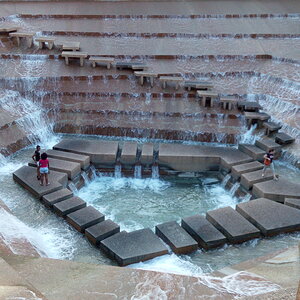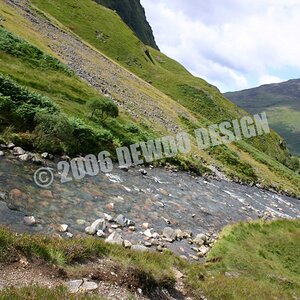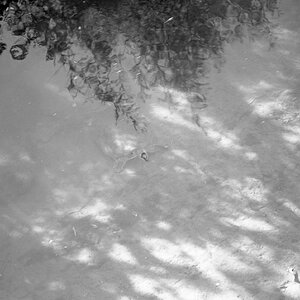Navigation
Install the app
How to install the app on iOS
Follow along with the video below to see how to install our site as a web app on your home screen.

Note: This feature currently requires accessing the site using the built-in Safari browser.
More options
You are using an out of date browser. It may not display this or other websites correctly.
You should upgrade or use an alternative browser.
You should upgrade or use an alternative browser.
Sabattier Effect!
- Thread starter Unimaxium
- Start date
Unimaxium
TPF Noob!
- Joined
- Nov 13, 2004
- Messages
- 2,689
- Reaction score
- 22
- Website
- www.flickr.com
- Can others edit my Photos
- Photos OK to edit
That's not cheating... that's how I did my print. And I think that's how Hertz did his too.Force of Nature said:I have some prints i did the other day, but mine is cheating really with solarisation of the print rather than the film
 :thumbup:
:thumbup:Hertz van Rental
We're supposed to post photos?
You don't have to take the print out of the developer or dry it to solarise it.
I do a normal print and process it normally for two to two and a half minutes. During development I flash the print.
You can turn the whites on or put the dev tray under the enlarger or use a torch or whatever.
The further in to the processing you fog the print the less the degree of 'solarisation'.
The intensity of the light and the length of time the print is flashed for all effect the outcome too. And don't forget that the paper is far less sensitive to light when it is in the developer so you might need to give it more light than you think.
It's a matter of trial and error but it does allow you to see the effect there and then and it saves a lot of messing.
Don't be tempted to pull the print before it is fully developed though as the print will go blotchy.
Just be prepared to waste some paper - but it's worth it.
I do a normal print and process it normally for two to two and a half minutes. During development I flash the print.
You can turn the whites on or put the dev tray under the enlarger or use a torch or whatever.
The further in to the processing you fog the print the less the degree of 'solarisation'.
The intensity of the light and the length of time the print is flashed for all effect the outcome too. And don't forget that the paper is far less sensitive to light when it is in the developer so you might need to give it more light than you think.
It's a matter of trial and error but it does allow you to see the effect there and then and it saves a lot of messing.
Don't be tempted to pull the print before it is fully developed though as the print will go blotchy.
Just be prepared to waste some paper - but it's worth it.
Force of Nature
TPF Noob!
- Joined
- Jan 17, 2005
- Messages
- 355
- Reaction score
- 4
- Location
- Lancaster University(!), UK
- Website
- force-of-nature.deviantart.com
Hertz van Rental said:You don't have to take the print out of the developer or dry it to solarise it.
I do a normal print and process it normally for two to two and a half minutes. During development I flash the print.
You can turn the whites on or put the dev tray under the enlarger or use a torch or whatever.
The further in to the processing you fog the print the less the degree of 'solarisation'.
The intensity of the light and the length of time the print is flashed for all effect the outcome too. And don't forget that the paper is far less sensitive to light when it is in the developer so you might need to give it more light than you think.
It's a matter of trial and error but it does allow you to see the effect there and then and it saves a lot of messing.
Don't be tempted to pull the print before it is fully developed though as the print will go blotchy.
Just be prepared to waste some paper - but it's worth it.
Thats what I did!
Hertz van Rental
We're supposed to post photos?
And there is no such thing as 'cheating' in Photography. It's called 'technique' ;-)
Force of Nature
TPF Noob!
- Joined
- Jan 17, 2005
- Messages
- 355
- Reaction score
- 4
- Location
- Lancaster University(!), UK
- Website
- force-of-nature.deviantart.com
hehe, but its not a true solarisation is it, its just a pseudo, I think thats the phrase. Man I need a scanner to show you, I also reversed my solarisation which looks awesome.
Hertz van Rental
We're supposed to post photos?
Yes it is psuedo-solarisation.
True solarisation occurs on negatives that have been grossly over-exposed.
The only example that I know of is 'Black Sun' by Ansel Adams. It was a long exposure shot and the sun has reversed so that it is black.
I can explain what causes it if you want but it's very technical and rather boring.... ;-)
True solarisation occurs on negatives that have been grossly over-exposed.
The only example that I know of is 'Black Sun' by Ansel Adams. It was a long exposure shot and the sun has reversed so that it is black.
I can explain what causes it if you want but it's very technical and rather boring.... ;-)
Unimaxium
TPF Noob!
- Joined
- Nov 13, 2004
- Messages
- 2,689
- Reaction score
- 22
- Website
- www.flickr.com
- Can others edit my Photos
- Photos OK to edit
I am actually kind of interested in the details 
PS: do you know anywhere I can see that image "black sun" I'm searching with google but I don't seem to be coming up with any pictures of it.
PS: do you know anywhere I can see that image "black sun" I'm searching with google but I don't seem to be coming up with any pictures of it.
Hertz van Rental
We're supposed to post photos?
The Black Sun, Tungsten Hills, Owens Valley, California 1959 - Image 7, Portfolio V of the Portfolios of Ansel Adams.
It's not actually a very good picture so it doesn't get seen much.
As for the mechanism that causes true solarisation we are talking electron transfer, ion migration and photon absorbtion - Quantum mechanics and stuff. Will give a full explanation later when I have more time.
It's not actually a very good picture so it doesn't get seen much.
As for the mechanism that causes true solarisation we are talking electron transfer, ion migration and photon absorbtion - Quantum mechanics and stuff. Will give a full explanation later when I have more time.
Rogue Monk
TPF Noob!
In the winter 2004 issue of Digital Photography User "Black & White" (http://www.digitalphotouser.co.uk/), they show how to do this in Photoshop.
I did a quick run on a sunset image (top one is greyscale with quick levels adjustment. second is digital Sabattier).

Not saying its better. Just showing another possible option.
I did a quick run on a sunset image (top one is greyscale with quick levels adjustment. second is digital Sabattier).

Not saying its better. Just showing another possible option.
Similar threads
- Replies
- 17
- Views
- 1K
- Replies
- 8
- Views
- 524
- Replies
- 16
- Views
- 462




![[No title]](/data/xfmg/thumbnail/42/42467-e93a2a1ecfbab434ac7d27c9d0dd0a02.jpg?1619740193)





![[No title]](/data/xfmg/thumbnail/30/30862-d177ccfc3a82369b1005863cfe5fd13d.jpg?1619734481)
![[No title]](/data/xfmg/thumbnail/38/38261-db20f6f92ee8f0d4c5cf1536e308638b.jpg?1619738546)
